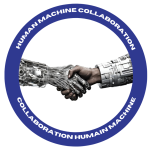
Introduction: Why Silence Is Costly in Manufacturing
In many Canadian manufacturing plants, silence is mistaken for alignment. Leaders assume that when employees don’t raise issues, things are running smoothly. In reality, silence often hides fear—fear of blame, criticism, or job loss. This lack of psychological safety comes at a high price: mistakes go unreported, problems multiply, and opportunities for innovation vanish.
For manufacturers scaling between $10M and $30M in revenue, this silent cost can quickly run into millions.
What Is Psychological Safety in Manufacturing?
Psychological safety means employees feel safe to speak up, share concerns, and take risks without fear of negative consequences. In a manufacturing context, this translates into:
- Reporting errors without fear of punishment
- Suggesting improvements to production processes
- Speaking up about safety hazards before they escalate
- Engaging in problem-solving openly across shifts and departments
But it is important to make a distinction: psychological safety is not an individual trait—it is a team property.
As Harvard professor Amy Edmondson explains:
“Team psychological safety is a shared belief held by members of a team that it’s okay to take risks, to express their ideas and concerns, to speak up with questions, and to admit mistakes—all without fear of negative consequences. This is a group-level phenomenon. It shapes the learning behaviour of the group and, in turn, affects team performance and therefore organizational performance.”
In other words, while every person experiences safety on an individual level, it only emerges when the group creates and sustains it collectively. In manufacturing environments, where collaboration across shifts and departments is critical, this distinction is key: psychological safety enables learning, continuous improvement, and ultimately higher performance.
The ROI: Hard Numbers Backing a Human-Centred Practice
Research shows a wide range of financial returns from safety and mental health initiatives:
- 24%–250% ROI: A meta-analysis by Attridge (2019) on workplace mental health programs demonstrated consistent positive returns.
- Up to 962% ROI: Case studies published in theJournal of Occupational and Environmental Medicine found exceptional gains where trust and openness reduced errors and improved collaboration.
- 17%–76% productivity improvements: Deloitte Canada (2020) reported significant boosts from workplace psychological health programs in Canadian organizations.
These numbers confirm what many lean leaders already suspect: operational excellence cannot be achieved without a safe environment for people to contribute fully.
Why Fewer Than 5% of Mid-Size Manufacturers Act on It
Despite the proven ROI, adoption of psychological safety practices in Canadian manufacturing remains extremely limited.
Market scans of mid-size manufacturers ($10M–$30M revenue) show that while most firms have basic workplace safety or compliance programs in place, fewer than 5% have adopted integrated approaches that link psychological safety directly to operational excellence (ISED Canada, 2023; Deloitte Canada, 2020).
The reasons are clear:
- Perception problem: Many leaders still see psychological safety as an HR initiative, not an operational lever.
- Short-term focus: Investments are prioritized toward machinery and automation, while culture and engagement are underfunded.
- Measurement gap: Unlike OEE or throughput, psychological safety is rarely tracked as a business metric.
This lack of adoption represents a missed opportunity. With over 90,000 manufacturers in Canada generating $935.6 billion annually (ISED Canada, 2023), the competitive advantage for those who act early is significant.
The Productivity Case: Beyond Compliance
Safety is often viewed only through a compliance lens. But in manufacturing, compliance is just the baseline.
When teams feel safe:
- Errors are identified earlier, saving time and costs
- Innovation flourishes, leading to better products and processes
- Cross-shift communication improves, reducing rework
- Engagement rises, lowering turnover and absenteeism
Why Team Safety Drives Performance
Psychological safety goes further than reducing errors—it transforms how teams function every day.
- Greater engagement and motivation: When employees know their contributions matter and that they can speak up without fear of retribution, they become more committed and energized in their work.
- Better decision-making: Safety encourages a wider range of voices. By allowing people to openly share their opinions and concerns, leaders tap into more diverse perspectives, leading to smarter and more balanced decisions.
- A culture of continuous learning: When mistakes can be shared without blame, they turn into opportunities for growth. Teams become more adaptable, more resilient, and more open to continuous improvement.
Psychological Safety and Lean/Kaizen: Two Sides of the Same Coin
Continuous improvement tools—like Kaizen events, A3 problem solving, 5S audits, and daily huddles—only succeed when people feel free to contribute openly.
- In a Kaizen workshop, employees need the courage to challenge the “way we’ve always done things.”
- In 5S, frontline workers must be able to flag inefficiencies or hazards without fear of being criticized.
- In A3 problem solving, learning from mistakes is the heart of the method—and it requires a safe environment to share those lessons honestly.
Without psychological safety, these Lean practices risk becoming check-the-box exercises. With it, they become powerful vehicles for innovation, efficiency, and resilience.
Psychological Safety: The Hidden Driver of Resilience
The simple business case for each dimension of resilience is well known:
- Integrity: Ethical business behaviour enhances financial performance. Fear of retaliation for speaking up undermines integrity and weakens trust.
- Innovation: Employees who share ideas and generate solutions improve profitability. Curbing creative ideation leads to stagnation.
- Inclusion: Organizational diversity predicts higher financial returns. Disrespectful interactions, however, have a disproportionately toxic impact on engagement and belonging.
Both integrity and inclusion are also key elements of assessing an organization’s ESG commitments. But at the foundation of all three dimensions—integrity, innovation, and inclusion—lies psychological safety. Any breach erodes this foundation, weakening not only performance but also the organization’s capacity to be resilient in the face of disruption (Gube & Sabatini, 2022).
3 Practical Steps to Build Psychological Safety into Daily Operations
- Make it visible in your management system.
Integrate psychological safety into your daily huddles, KPIs, and visual management boards. - Train leaders at every level.
Supervisors and middle managers set the tone—equip them to encourage questions, admit mistakes, and recognize contributions. - Use continuous improvement as the vehicle.
Link lean problem-solving sessions with psychological safety by creating structured, judgment-free spaces for ideas.
For more on integrating health and safety into continuous improvement, see our blog: The Impact of Continuous Improvement on Health and Safety
Q&A: Isn’t This Just “Nice-to-Have”?
Q: Why invest in psychological safety now?
A: Because silence is expensive. In a tight-margin environment, every hidden problem costs you productivity, time, and talent.
Q: What’s the link to operational excellence?
A: Continuous improvement thrives only when people feel safe to challenge the status quo. Psychological safety is the foundation.
Q: Isn’t resilience about systems, not people?
A: Systems matter, but resilience ultimately comes from people’s ability to adapt, learn, and innovate together. Psychological safety is the glue that holds resilience together: it sustains integrity, fuels innovation, and strengthens inclusion. Without it, resilience strategies collapse under pressure (Gube & Sabatini, 2022).
Conclusion: From Silence to Strength
Canadian manufacturing has an untapped lever for growth: psychological safety. It is not about making people comfortable—it is about enabling teams to perform at their best. With ROI ranging from 24% to 962%, productivity boosts up to 76%, and proven links to resilience, the business case is undeniable.
The safest teams don’t just survive—they outperform, adapt faster, and innovate more.
Ready to see where your team stands? Start with our Operational Maturity Assessment and take the first step toward safer, stronger performance.
Ready to Take Your Operations to the Next Level? Let’s discuss how our expertise can unlock your full potential. Contact us for a consultation tailored to your goals.
Sources
- Attridge, M. (2019).A meta-analysis of workplace mental health promotion and prevention programs: Return on investment. Journal of Occupational and Environmental Medicine.
- Goetzel, R.Z., et al. (2014).Do workplace health promotion (wellness) programs work? Journal of Occupational and Environmental Medicine.
- Deloitte Canada. (2020).The ROI in workplace mental health programs: Good for people, good for business.
- Edmondson, A. (1999).Psychological safety and learning behavior in work teams. Administrative Science Quarterly.
- Gube, J., & Sabatini, J. (2022).The Key to Business Resilience Is Psychological Safety. Harvard Business Review.
- ISED Canada. (2023).Canadian manufacturing sector overview.
About Veronica B. Marquez, M.Sc., CSSBB
 I help growing manufacturing and service organizations scale without chaos—by turning operational challenges into sustainable performance gains. My superpower is making strategy real at every level of the business: connecting people, processes, and purpose to drive productivity, engagement, and resilience. I bring clarity to complexity and help teams execute better, faster, together. Through a proven lens of operational excellence, continuous improvement, and supply chain optimization, I work with leaders to align efforts, simplify execution, and create systems that actually support growth.
I help growing manufacturing and service organizations scale without chaos—by turning operational challenges into sustainable performance gains. My superpower is making strategy real at every level of the business: connecting people, processes, and purpose to drive productivity, engagement, and resilience. I bring clarity to complexity and help teams execute better, faster, together. Through a proven lens of operational excellence, continuous improvement, and supply chain optimization, I work with leaders to align efforts, simplify execution, and create systems that actually support growth.
Named among the Top 50 Experts in Operational Excellence by the PEX Network, I also ranked in the Favikon Top 200 English-speaking creators on risk and resilience (13th worldwide and 3rd in Canada). I bring over 20 years of experience across diverse industries including manufacturing, distribution, mining, and public services. I teach Lean Six Sigma at the executive education level, lecture in service design at the master’s level, and host a French-language LinkedIn Live series on Industry 5.0.
Ready to see how operational excellence can transform your business? Connect with me: linkedin.com/in/veronicabm.
📷 Canva








